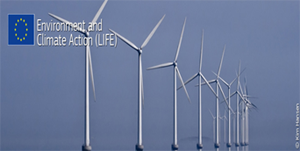VAIA
Acronym: VAIA
Title: Valuing Afforestation of damaged woods with Innovative Agroforestry
Call: LIFE20 CCA7IT7001630
Duration: 60 mesi (01/10/2021 – 30/09/2026)
Coordinator: Rigoni di Asiago srl
Total EU Contribution: € 3.247.034,00
TESAF Budget: € 186.608,00 (di cui contributo EU € 102.634,00)
Responsible Scientific Officer/Investigator: Lingua Emanuele
Research Team: Lingua Emanuele; Gatto Paola; Mario Pividori
Brief description:The project focuses on the adaptation of forest areas to extreme meteorological events, promoting:
- fast response to negative effects produced by the events;
- acceleration of natural regeneration processes targeting stable ecosystems with high biodiversity levels;
- generation of economic benefits for the temporary compensation of the loss of income from timber exploitation.
This will be done by implementing innovative transitional agroforestry concepts as ecosystem-based solution for promoting the fast regeneration of damaged forests.
The project objectives are:
1) To consolidate the knowledge base on the use of innovative agroforestry procedures in forest farming, assess the effectiveness of the method and encourage its use in European forests;
2) To develop an ecosystem-based innovative approach (VAIA approach) constituted by implementing ‘temporary’/transitional (15/20 years) agroforestry until the growth of forest trees, and finalised to:
a) tackle in short time most of the negative effects caused to the environment by the destruction of trees (e.g. erosion, mineralisation of organic matter, loss of biodiversity);
b) accelerate the reconstruction of forest ecosystems, mixing natural and artificial reforestation concepts in order to promote the establishment of stable ecosystems characterized by high biodiversity and ecological value and the adaptability and resilience of the ecosystems, introducing structural and genetic variability (intra/inter species), increasing the opportunities for natural selection in the perspective of adaptation to climate changes;
c) create opportunities for sustainable economic development aimed to halt the depopulation in the areas where disruptive events took place;
3) To test and apply the VAIA approach in several areas characterized by different conditions in order to define fast response models to be transferred (also thanks to replication activities and toolkit)
Website: https://lifevaia.eu/






